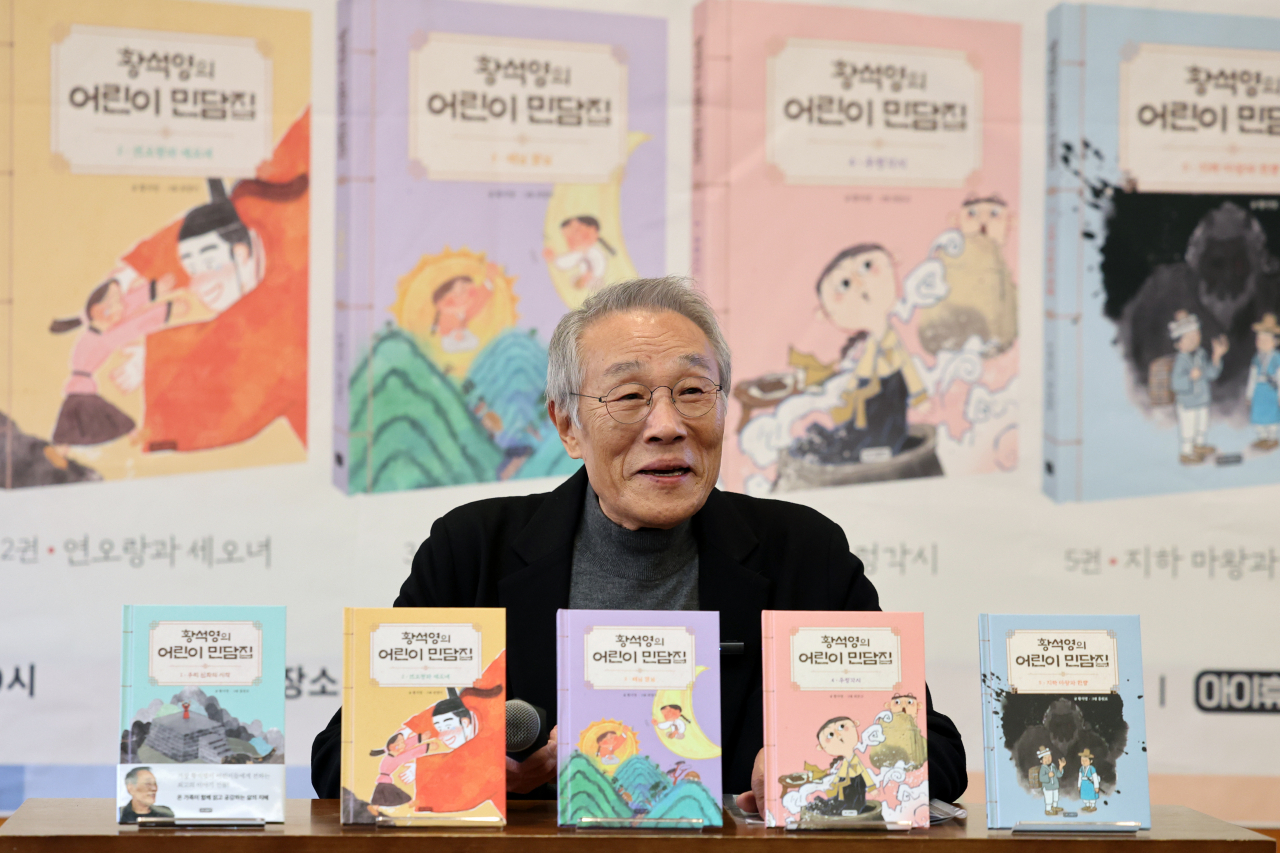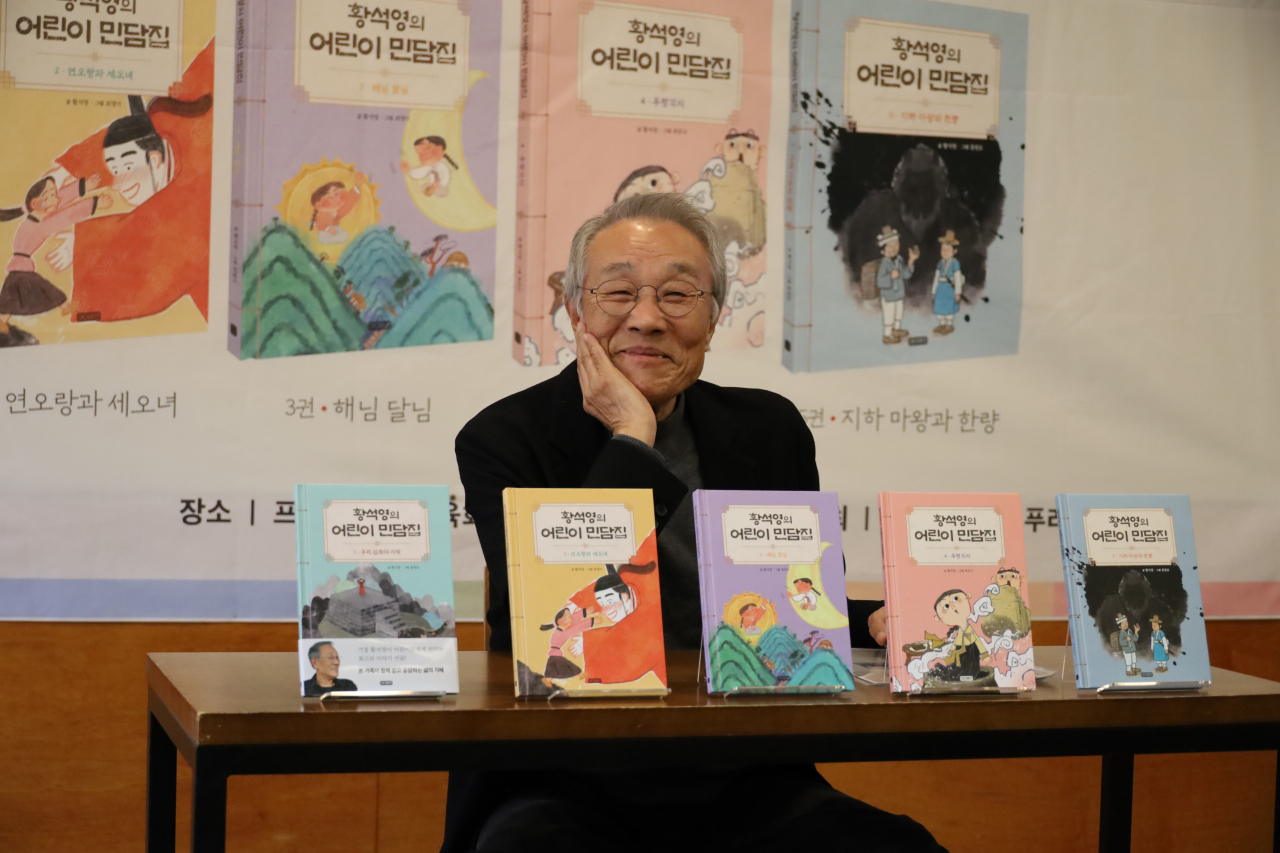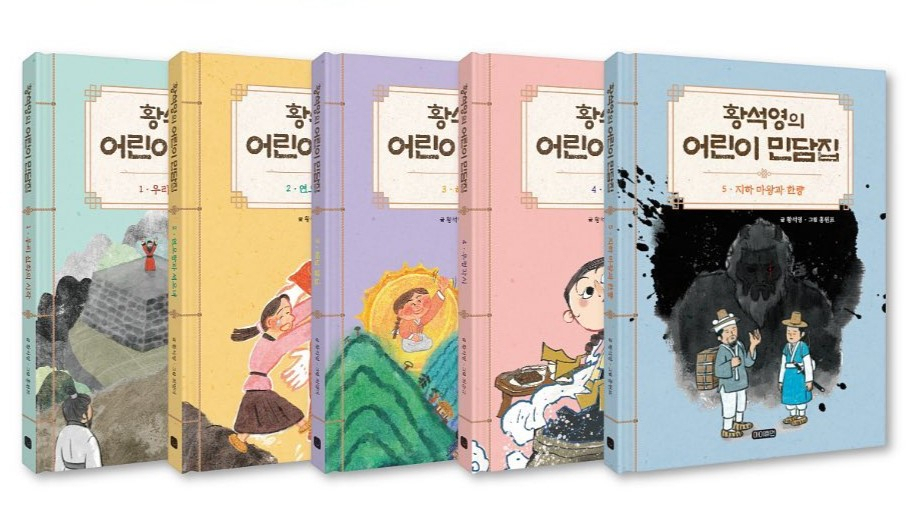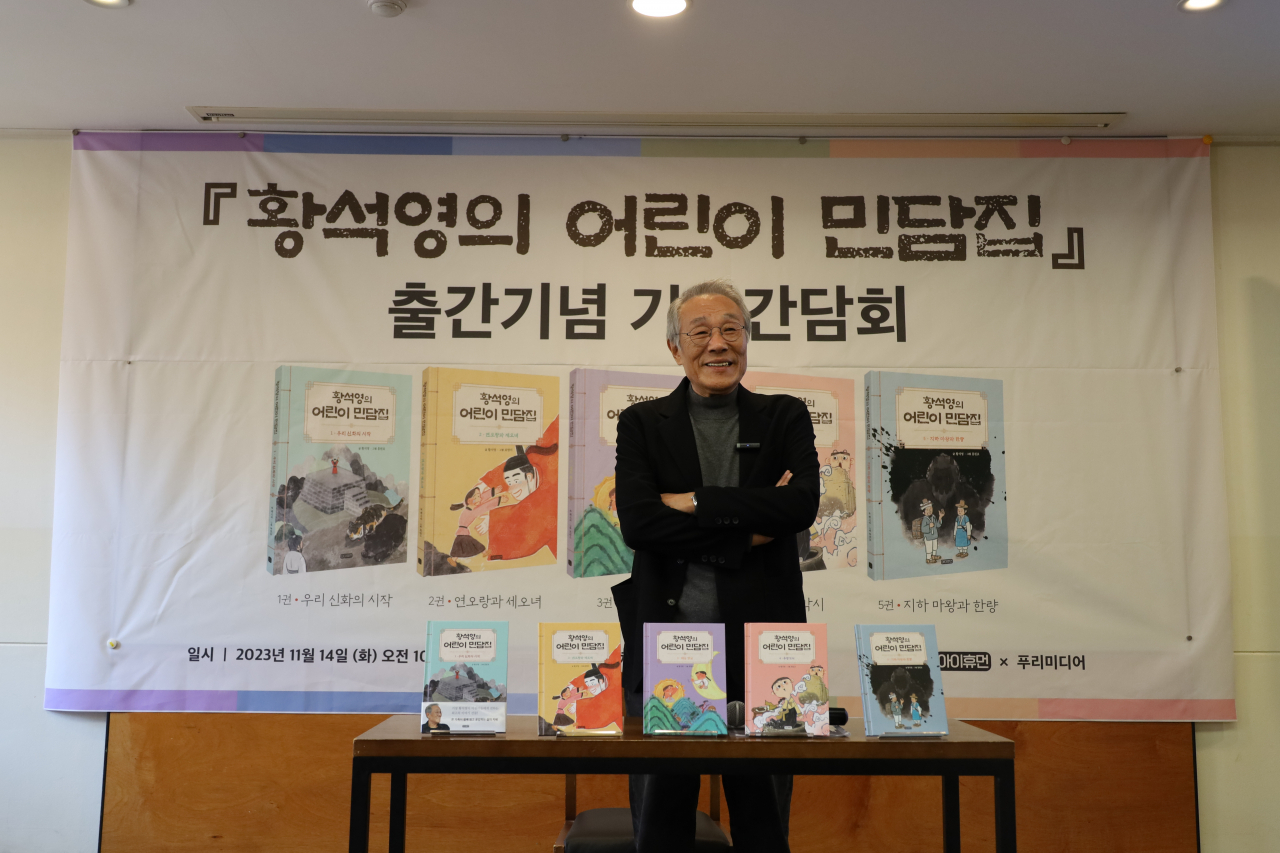S. Korean literary giant Hwang Sok-yong turns to folktales for children
By Hwang Dong-heePublished : Nov. 14, 2023 - 18:51

Folktales are passed down through generations, evolving as they move from one storyteller to another. They transcend being merely old stories, but "stories of the present" and "stories of the future," according to South Korean novelist Hwang Sok-yong.
A towering figure in the country’s literary scene since his debut in 1962, Hwang announced a distinctive turn in his literary journey: He will focus on folktales for children as he approaches the twilight of his career.
Folktales have been a source of his artistic inspiration, along with the turbulent modern history of Korea, Hwang said at a press conference held in Jung-gu, central Seoul, Tuesday.
"(From the very beginning of my career), I envisioned writing stories that revive the daily lives of ordinary people from history. And delving into history and literature, I discovered that there was this rich tapestry of folktales in the middle."
Hwang, who previously characterized his later works as “folktale realism,” wrote novels imbued with the essence of Korean legends and myths, including “The Guest,” “Princess Bari” and “Shimcheong: The Lotus Path.”
"After finishing 'Mater 2-10' and moving into my new writing den, I found an old box with some 20 notebooks. They were notes and research on Korean folktales. I think I probably wrote them when I was working on ‘The Guest’ or ‘Princess Bari.’”
Hwang thought about throwing them away but decided to breathe new life into them.

"When I was young, I used to hear bedtime stories -- legends, myths and tales -- from my grandmother and elderly aunts, but these days, with TV and smaller families, there seem to be fewer opportunities to share such stories," he lamented.
Hwang said he didn’t have those hearty times with his grandchildren either, because they were overseas when they were growing up and are now adults.
“Now that I am 80, I want to leave interesting stories for the next generation, like a grandfather sharing stories with grandchildren, before I run out of energy.”
The first five books of the series were published in October, starting with the founding legends of Gojoseon, the first recorded state in Korean history; Yeonorang and Seonyeo tale from the Silla Kingdom; the story of brother and sister who became the Sun and Moon; a river snail bride; and the fairy and the woodcutter.
A total of 50 books will be published by 2025, according to the HumanCube Publishing Group.

“They are a source of creativity and imagination. They become the archetype of stories,” said Hwang about why children should read folktales.
Nowadays children are familiar with Western children’s stories, like Andersen's fairy tales, the Brothers Grimm's stories and Greek-Roman myths.
"But the most important thing is that you must first know who you are. Traditional folktales have a great influence on 'self-identity.' When you are strong with your own identity and culture, then you can also respect and understand each other."
Hwang pointed out that Korean folktales are distinctive and have a competitive edge as well.
“Most Western folktales are stories of princes and princesses, nobles and other royalties. But Korean folktales are predominantly about stories of ‘the people.’ So their narratives are feisty and lively."
The leap of imagination is especially amazing, said Hwang. Characters travel in and out of the sea, the underworld, and communicate with mountain animals such as magpies, tigers and foxes, even with goblins.

Hwang and the publisher are working to bring these folktales to various mediums, including animated cartoons and webtoons featuring voice actors for younger children (ages 3-5).
“It is true that your imagination deepens as you read folktales. The folktale project is now about halfway finished and I am preparing my next full-length novel, which will probably be about a very old tree,” said Hwang.
The 80-year-old writer has penned over 15 novels, two collections of novellas and six essays. His notable works include "The Road to Sampo" (1974), a must-read for high school literature textbooks, and the 12-volume historical epic, "Jang Gilsan."
Many of his works have been translated and published in more than 30 countries. He has gained international recognition with awards and nominations for works such as "The Guest" in 2004 and "Shimcheong, The Lotus Path" in 2010, for France’s Prix Femina awards. A bittersweet exploration of modernization, "At Dusk," was longlisted for the 2019 Man Booker International Prize, and received the Emile Guimet Prize for Asian Literature.
His most recent novel, "Mater 2-10," an epic, multi-generational tale intricately weaving a century of Korean history, was published worldwide in English in June.



















![[Today’s K-pop] Treasure to publish magazine for debut anniversary](http://res.heraldm.com/phpwas/restmb_idxmake.php?idx=642&simg=/content/image/2024/07/26/20240726050551_0.jpg&u=)